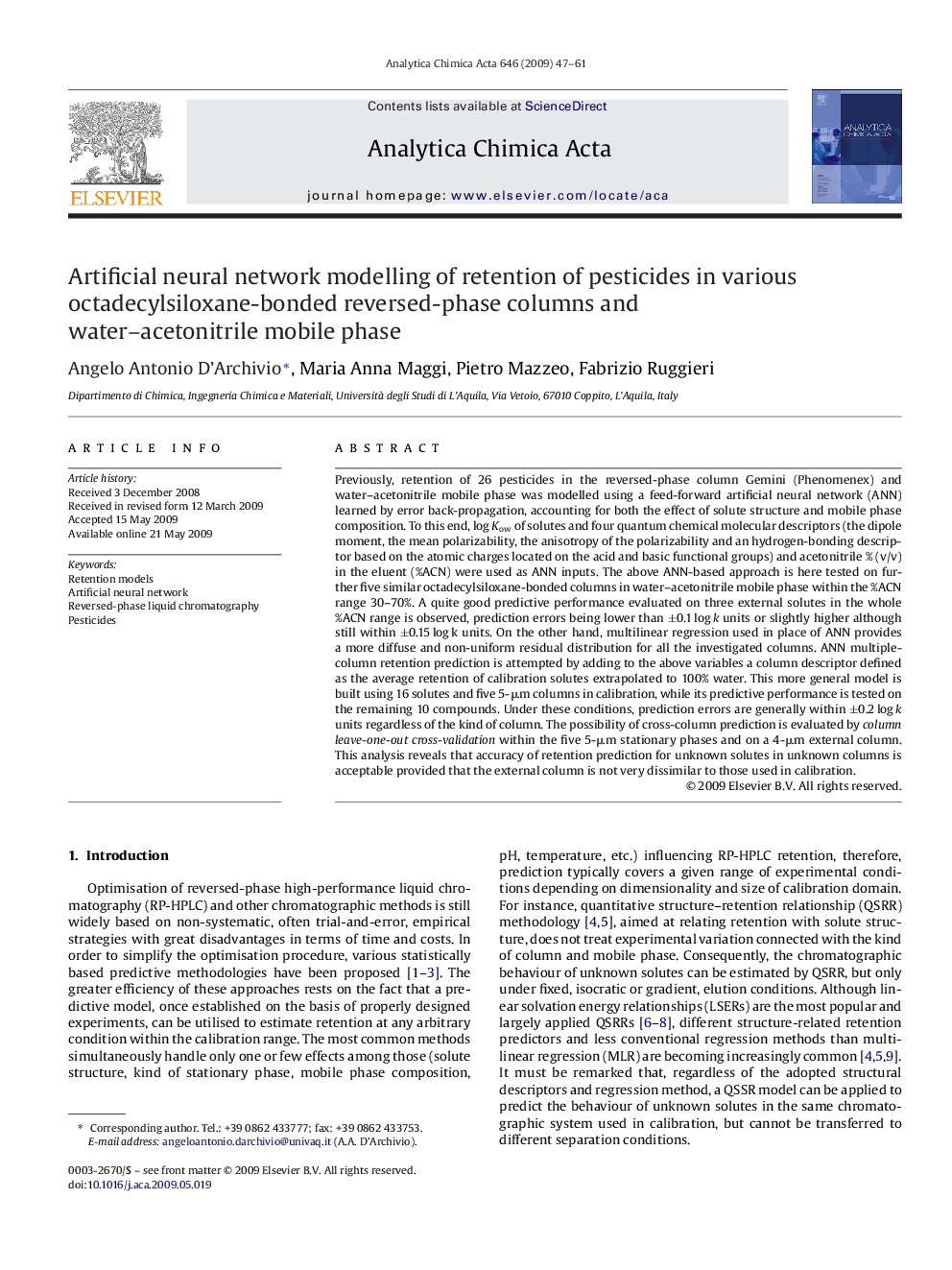| کد مقاله | کد نشریه | سال انتشار | مقاله انگلیسی | نسخه تمام متن |
|---|---|---|---|---|
| 1168354 | 1491157 | 2009 | 15 صفحه PDF | دانلود رایگان |

Previously, retention of 26 pesticides in the reversed-phase column Gemini (Phenomenex) and water–acetonitrile mobile phase was modelled using a feed-forward artificial neural network (ANN) learned by error back-propagation, accounting for both the effect of solute structure and mobile phase composition. To this end, log Kow of solutes and four quantum chemical molecular descriptors (the dipole moment, the mean polarizability, the anisotropy of the polarizability and an hydrogen-bonding descriptor based on the atomic charges located on the acid and basic functional groups) and acetonitrile % (v/v) in the eluent (%ACN) were used as ANN inputs. The above ANN-based approach is here tested on further five similar octadecylsiloxane-bonded columns in water–acetonitrile mobile phase within the %ACN range 30–70%. A quite good predictive performance evaluated on three external solutes in the whole %ACN range is observed, prediction errors being lower than ±0.1 log k units or slightly higher although still within ±0.15 log k units. On the other hand, multilinear regression used in place of ANN provides a more diffuse and non-uniform residual distribution for all the investigated columns. ANN multiple-column retention prediction is attempted by adding to the above variables a column descriptor defined as the average retention of calibration solutes extrapolated to 100% water. This more general model is built using 16 solutes and five 5-μm columns in calibration, while its predictive performance is tested on the remaining 10 compounds. Under these conditions, prediction errors are generally within ±0.2 log k units regardless of the kind of column. The possibility of cross-column prediction is evaluated by column leave-one-out cross-validation within the five 5-μm stationary phases and on a 4-μm external column. This analysis reveals that accuracy of retention prediction for unknown solutes in unknown columns is acceptable provided that the external column is not very dissimilar to those used in calibration.
Journal: Analytica Chimica Acta - Volume 646, Issues 1–2, 30 July 2009, Pages 47–61